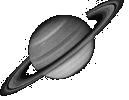|
Short explanation why Richard Stafford is right:
Problem: A bus stops at a bus stop. It then starts moving. So far
the interval from when it stopped, to when it started, is
undefined.
What if I noticed someone entered a shop the instant the bus
stopped, and left the shop the instant the bus started? Will this
help me measure "how long the bus stopped"?
All I get is a frequency of 1 for the bus event that matched to a
frequency of 1 for the shop event and giving a frequency of 1
for the matched event.
What if I took 20 paces while the bus stopped? I still haven't
said "how long" each pace lasted. But again I have a number, my
20 paces, a frequency; that matches to 1 interval of bus-stopping
and 1 match of bus-event to paces-event.
Any clock I use is just going to give me more 'paces'; a bigger
number of unknown intervals to match against the bus 1-interval.
If my clock is a harmonic oscillator, at least I will know each
of its paces is the same.
But to measure "time over there" (the bus stopping interval)
involves matching "a number over there, of undefined-interval/s"
at there; to a number over here of undefined intervals at here.
Which suggests it is either impossible to really measure time;
and/or that all you can do is compare a number here with a number
there.
Suppose I saw a taxi start and stop three times. Consider when it
first started I walked 15 steps which I completed just at the
instant the taxi stopped the third time. I can just compare
frequencies: he had 3 'clicks' in the 1 'instant' (actually the
instant is an undefined interval that takes into account our
relative places apart) that I had 15 'clicks'.
What you have is an invariance of 1-'instant' (which effectively
encodes comparison of where he and I are), for which he clocks 3
and I clock 15 on our different clocks. So each of us actually
measure 'proper time' on our clocks.
If each party was using their own local equal intervals; then
it's like he has a clock that advanced 3 units of his; during 1
unit of match between our clocks; where my clock advanced 15
units of mine.
Since there is always at least some distance say between two
events, so a distance between the two local event clocks; then
all you can measure is the ratio between your clock-number of
undefined intervals you have; and their clock-number of undefined
intervals they have, for 1 matching, coincidence-interval.
With your two readings, of beginning and ending of their whole
event (or their clock), affected
by the distance away from you that each end of the-space aspect
(eg. marks on a clock-face) of their clock is; all you measure is
the space-time undefined interval between two readings on their
clock compared to a number of undefined such intervals on your
clock.
You get the proper time of their clock/ event in terms of your
clock/event. Effectively: they have a clock that goes 1,2,3 and
you have a clock that goes 1,2,3,4,5,6,7,8,9,10,11,12,13,14,15.
You can call their 3 as 'space', and your 15 as 'time'; and your
15 as 'space', and their 3 as time; and the start-stop
coincidence between you as 1 interval. Which is called "proper
time". Richard Stafford's view is shown to be correct.
-dolphin |



